
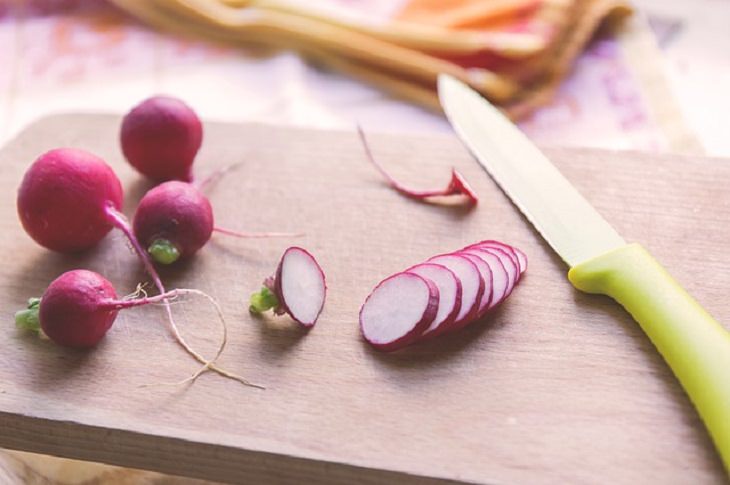
1. You prefer to use a glass board
Glass boards do tend to be more resistant to stains and odors, but that hard surface will quickly dull your knife blade. Using a glass board may also put you at risk of injury, since its surface may cause the knife to slip. Surfaces like wood will keep your knives sharp for longer and are also less likely to harbor bacteria. Plastic surfaces, however, need to be cleaned thoroughly.
2. You use a small chopping board
While a small cutting board may take up less space in the kitchen and will surely be easy to clean, the smaller surface area means that your food will be sliding off your board and your knife will have little room to move back and forth, putting you at a higher risk of cutting yourself. So save yourself the trouble and go for a bigger board.
3. You do not use a separate board for meat
Meat, poultry, and fish can harbor bacteria like E.coli and salmonella, which can cause you to feel sick. So when you use just one cutting board for both meat and vegetables, the juice from the former may likely contaminate the latter. It's advised that you therefore separate your boards, using one just for animal products, and cleaning it with hot, soapy water after each use.
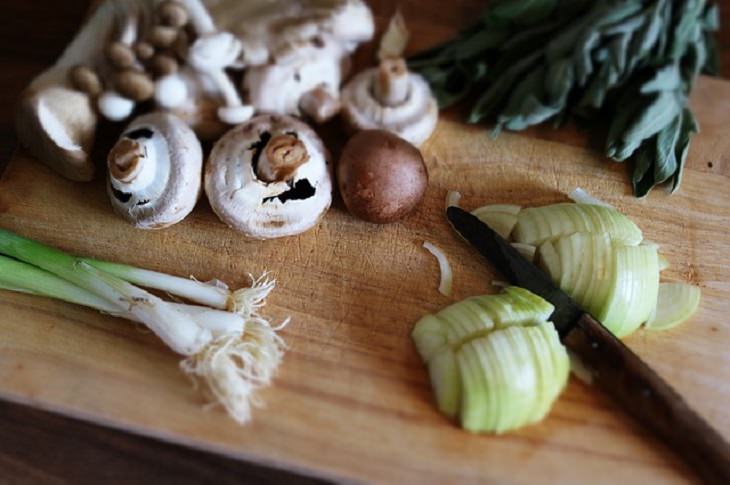
4. You use the same board for someone with allergies
Cross-contamination is not only a risk for meat eaters, it may also be a problem when you are prepping food for someone with an allergy. As although the cutting board may look clean, it still harbors traces of an allergenic food. With this in mind, you may want to invest in a separate board. If using your regular board, however, take steps to thoroughly wash and sanitize it.
5. You put your wooden board in the dishwasher
While plastic cutting boards can endure the heat of a dishwasher, a wooden board will likely warp or crack. They are therefore better to wash by hand with some soap and warm water. If you're dealing with stains or strong odors, get rid of them by sprinkling your board with baking soda and rubbing it with half a lemon.
6. You're not drying your board thoroughly
A damp board and minimal circulation sets the stage for bacteria to grow. So, instead of placing your cutting board back on the counter, it is best that you let it drip and dry on your dish rack.
7. You're not oiling your wooden board
All that washing with soap and water can cause your wooden board to dry out and crack. To prevent this from happening, rub the surface with food-grade oil, such as olive oil - this will keep it from drying out and will enable your board to last longer. Once a week, or even, once a month should be enough.
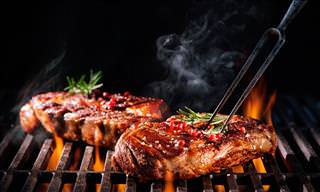
Be Sure to Read This if You're Planning a Cookout Soon!
Most people love a good cookout, but that doesn't mean that mistakes don't get made when grilling. Here are 12 common grilling mistakes that everyone makes.

Avoid Making These Common Mistakes When Working Out...
Avoid making these mistakes when working out, as they could end up leaving you seriously injured!

Why You Need to Avoid Palm Oil Right Away!
Palm oil is harmful to the environment. Here's what to do about it.

Suffer From Knee Pain? Here Are 6 Moves You Can Do
Banish knee pain today with these 6 exercises.
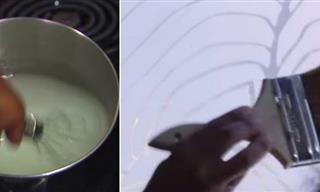
Here's How to Make Pretty Opaque Window Frosting!
If curtains aren't really your thing, then why not give opaque window frosting a chance? Here's how to make your own at home.

Minute Clinic: Healthy Habits That Take Under 60 Seconds
These healthy habits all take less than a minute to perform, yet have significant benefits for your well being.

21 Things a Burglar Could Tell You, But Certainly Won't
This post could save your possessions, or even your life, someday. That's why you have to make sure that you read it!

Before You Throw Old Books Away, Read THIS
In this article, we'll explore 7 solutions for reusing old books and turning them into useful objects that can upgrade your life and home.

How to Pack Light and Travel Effortlessly: 11 Tips
Master the art of packing light with these tips.

20 Common Misconceptions That Took Me by Surprise!
We hear and are taught so many things, yet sometimes, wrong concepts get mixed with right ones and we end up with false misconceptions...

These Dogs Will Give Their Lives to Keep You Safe
Here is a look at some of the best guard dogs in the world who will make you feel safe and protect you with their life.
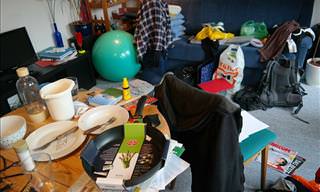
Here's How You Can Declutter Your Home in Just One Month
If you're looking to declutter your home but don't know where to begin, these 12 tips might just help you out!
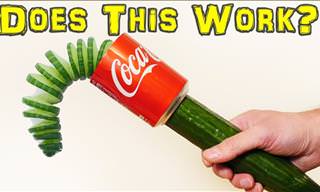 5:33
5:33
Six Super Useful Tips For Cutting Cucumbers
This tutorial is going to teach you some creative ways to slice a cucumber quickly and creatively!
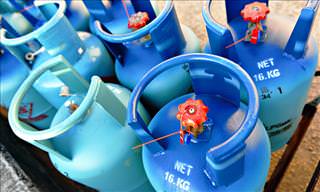
These Items Should Never, Ever Be Stored In a Garage...
We often overlook how to store items correctly, and many of these items usually end up in our garage. Here are 9 items you should never store in your garage.
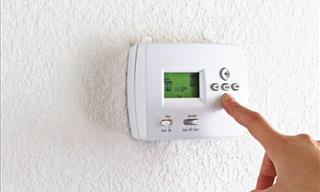
Guide: Stay Warm This Winter Without that Big Power Bill!
21 creative ideas to warming your house without spending additional money.
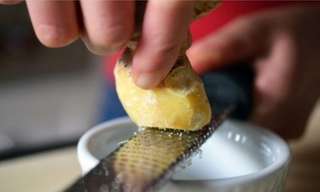
26 Handy Tips That'll Fit Any Kitchen
These tips will make you a master of the kitchen, full of little secrets and shortcuts...
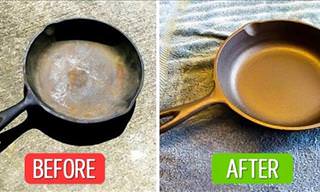
11 Superb Solutions to Turn an Old Looking Item into New
With these secrets, your old-looking items will look brand new once again!

7 Basic Winter Travel Mistakes and How to Avoid Them
These are the missteps you want to avoid when traveling in the winter.
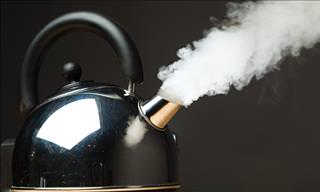
This Is Why You Should NOT Reboil Your Water!
It can be tempting to reboil water for your hot drinks. But when ordinary water is over boiled or reboiled, the chemical compounds change for the worse. Learn about it here.

This is All You Need to Know About Saving for Retirement!
Having yourself a defined target for your nest egg is an important aspect of a retirement plan. Here are 8 retirement facts that need to be taken seriously.
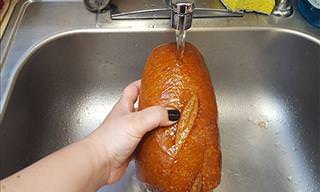
Bring Stale Bread Back to Life with This Genius Trick
If you ever have a crusty loaf that has gone stale, follow these tips and it will be as good as new in next to no time.

Active Stretching: What It Is and How To Do It
Active stretching is a great way to improve flexibility and mobility. Here's how it differs form other forms of stretching and a few useful examples.

7 Streaming Services You’ve Probably Never Heard Of
Looking for an alternative to Netflix, Amazon Prime, Disney+? Try these underrated streaming services.
 6:26
6:26
Travel Through Time: History's Best & Worst Makeup Moments
Makeup tastes and trends have changed dramatically over the years, and this great video proves it...
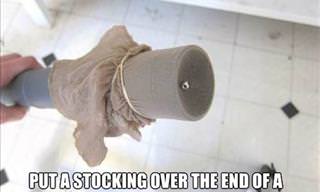
A Few Tips for Restoring Order to Your Household
Some of the best home tips
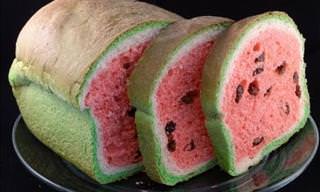
This Special Kind of Bread is Both Beautiful and Delicious
Tired of regular bread? How about surprising everyone with this beautiful and delicious "Watermelon Bread"? It's so easy to make!
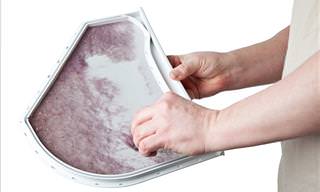
Warning: Are You Overlooking These 10 Home Risks?
Home is where the heart is, but it’s also where a load of potential dangers lurk as well. Here are ten of them!

Keep These Things In Mind When Paying With a Credit Card
Skimming is a technique that is used to steal credit card details. This guide will show you how to protect yourself and prevent your details being compromised.

Practical Tips on Adjusting a Home to be Senior-Friendly
Take note of these useful tips that will help you make your home more accessible and safe for your life ahead.
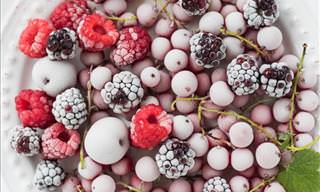
If You Value Your Health, Wash These 9 Foods Well
Are you washing these 9 foods correctly? Probably not!
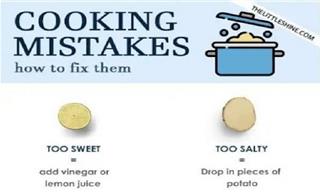
19 Charts about Food and Cooking That Will Come in Handy
These food and cooking charts and guides can come in real handy someday!
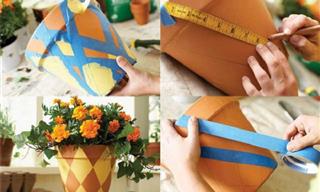
13 Great Ways to Decorate Your Potted Plants
Use one of the methods outlined in the following article to decorate your potted plants in an original way.

8 Adorable Mini Indoor Plants to Liven Up Any Small Space
These low-maintenance houseplants aren’t just cute, they hardly take up any space!

Keep Aphids At Bay with These Fantastic Home Remedies
Aphids are a pest that can wreck havoc in your garden. Thankfully, there are many simple ways to get rid of them. Here are 10 of them:
 6:11
6:11
There's a Secret Trick to Understanding Chinese...
This brilliant lecture will teach you the basics of Chinese

9 Common Lawn Problems and How to Fix Them
Here’s how to identify and overcome some common lawn problems.

7 Japanese Secrets to Staying Slim and Healthy!
The Japanese have their own ways of maintaining their weight.

Before You Buy: 8 Important Tips When Buying New Clothes
In this article, we'll discuss the difference between natural and synthetic fabrics as well as 9 essential tips for evaluating the quality and comfort of fabrics.
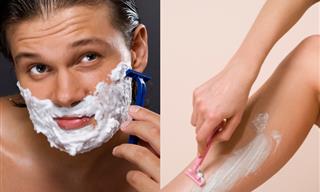
8 Natural & Easy Treatments for Common Shaving Mishaps
Discover 8 remedies for shaving mishaps, and also learn some prevention tips that will allow you to shave effectively, comfortably, and without side effects.

Guide: How to Use Rising Interest Rates to Your Benefit
Consider these tips to meet your investment goals when rates are rising.
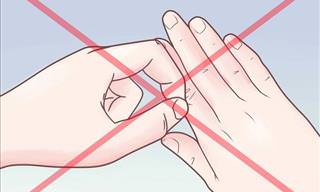
Remove That Painful Splinter - With Handy Baking Soda
Splinters are more painful than paper cuts, and very painful to remove. But thanks to baking soda you can actually remove splinters easily. And here's how.
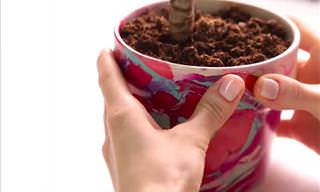 12:09
12:09
Spruce Up Your Garden With These Brilliant DIY Ideas
This brilliant video contains 16 different DIY ideas that are perfect for any garden. What's more, they couldn't be any simpler to make!
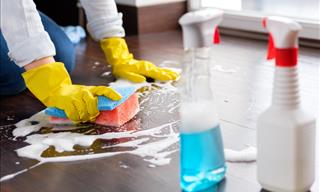
These Common Mistakes Can Ruin Your Floors and Carpets!
In this article, we tackle 12 common floor and carpet cleaning mistakes most of us are guilty of and explain what to do instead.

Make Your Home Look Expensive With These Low-Cost Tips
Transform the look of your home with these low-cost tips and tricks.
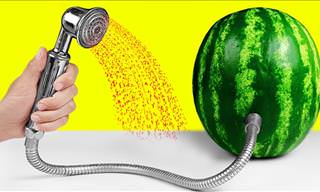 10:27
10:27
These Summer Life Hacks Are Totally Out of This World!
Check out these wonderful summer life hacks that are bound to keep you and your family entertained all summer long!
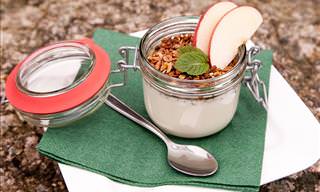
These Uses For Yogurt Will Leave You Very Surprised
Yogurt can do a whole lot more than just taste nice. In fact, it has many different uses. Here are 10 alternative uses for yogurt.
 1:30
1:30
The Trick to a Perfect Flower Arrangement is Amazingly Easy
Sometimes, the simplest ideas yield the best results - A simple trick that makes flower arrangement as easy as pie!


